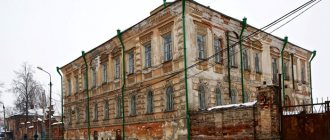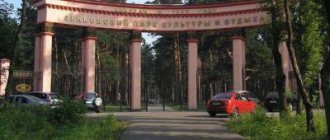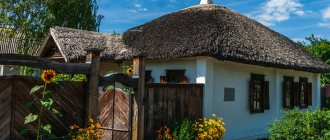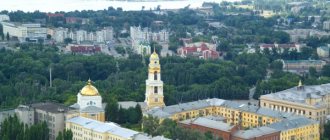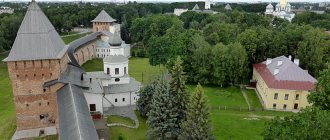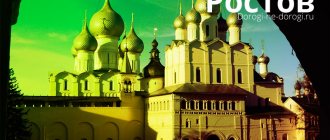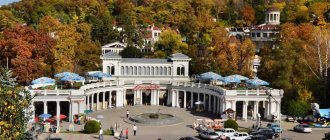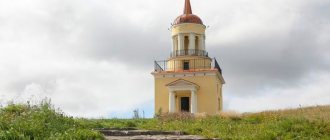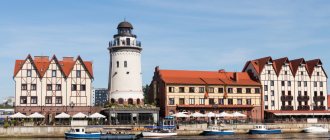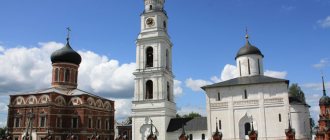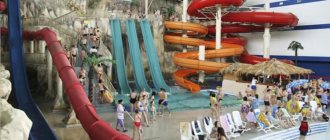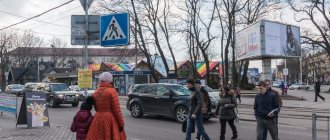Acquaintance with the city, standing on the banks of the Peksha River , begins in the carriage of a train rushing towards a settlement on the Moscow Hills. Kolchugino is easy to identify on a map of Russia. Buy a ticket and listen to the melodic clink of tea in the famous Kolchugin glass holders in a cozy compartment. On the road through Kirzhach it is separated by only 131 km from Moscow.
In the heady 90s of the last century, “shuttle traders” traveled to the city, buying cupronickel tableware, samovars, and teapots at low prices for resale. Many people appreciated and knew the quality of metal products produced by the city, which appeared around 1871. Namely, in Kolchugino they were able to make an alloy (called Kolchugaluminium), which was used to create the first aircraft of the Soviet Union ANT-2 from metal.
The city was formed next to the copper rolling and wire factories of the famous rich man A.G. Kolchugin. The partnership bearing his name became the largest metallurgical enterprise in the region in 1915. The appearance of an airfield with a flying club on the fields of the Mitkov nobles stimulated the arrival of young people to become a military pilot. Already in 1941, the settlement received city status. The established production for processing non-ferrous metals fulfilled profitable orders from the military, sailors, and the state treasury. The construction of the railway (Aleksandrov – Kineshma line) further accelerated the formation of the city’s infrastructure. Other industries appeared, for example, the production of cotton fabrics and a jewelry factory.
Now the city's population is about 46 thousand inhabitants.
Water tower in the shape of a samovar
On the street of the Third International, anyone can easily find an interesting structure - a water tower made in the shape of a Russian samovar. It was built in 1922 according to the sketches of the architect A.P. Vereshchagin. At one time the tower functioned as a television tower, but now it houses a sports complex. The city administration presented the tower with a clock corresponding to its dimensions. The clock, moreover, is decorated with city symbols, which makes the tower stand out as a landmark against the backdrop of the city landscape.
In addition, a major renovation was carried out in the tower; work on the external improvement of the building was aimed at restoring its original appearance, which gives the tower a refined spirit of noble antiquity. The municipality plans to introduce excursion routes into the tradition, the starting point of which will be the water tower of the city of Kolchugino.
Trip to Kolchugino with children
For children of preschool age, the most suitable entertainment in the city would be visiting entertainment halls in shopping centers (for example, in the Planeta shopping center, Sputnik shopping center). School-age children will be interested in the samovar water tower, as well as the Rodina Museum, created by their peers, and the Kolchuginsky Nature Reserve.
Teenagers, especially those who are interested in artistic photography, will certainly be interested in ancient manors. At least from the standpoint of original locations for photography.
There are children's rooms in almost every shopping center in Kolchugino
Holy Intercession Church
Kolchugino is the true center of the Orthodox culture of the Russian people. The city has more than ten temples, monasteries and churches, varying in size, age and popularity among the local population. But still, there is one place that is rightfully considered the main place in the city, this is the Holy Intercession Church, otherwise it is called the Church of the Intercession of the Blessed Virgin Mary.
Nowadays the temple is located on Metallurgov Street; Initially, an ordinary wooden church stood on this site, the history of which has sunk into oblivion. At the moment, only the date of construction of a stone temple on the site of a wooden church has been precisely established. And this date is 1792. During the Soviet period, the temple had to go through difficult times; the building housed a dairy factory. It was only in the nineties of the last century that work began on restoring the church as an architectural and historical object. A few years later, in 1992, the work was successfully completed and the temple was consecrated.
Location: Metallurgov Street - 137.
Population
Population - 45.6 thousand people (2009). Men make up 45.9% of the total population, women - 54.1% (2005 for the district). The economically active population is 30.4 thousand people. 22.1 thousand people (72.6%) are employed in the economy (2005). Of the total working population, 71.8% are employed in material production, and 28.2% in non-production spheres (2005).
| Population dynamics of Kolchugino | |||||||||||||
| Year | 1926 | 1939 | 1959 | 1970 | 1979 | 1989 | 1996 | 2002 | 2009 | ||||
| residents | 11 000 | 29 600 | 37 900 | 41 600 | 43 700 | 45 600 | 46 000 | 46 400 | 45 600 | ||||
The population by age (for 2005 in the district) is distributed as follows: under 17 years of age - 4.5%, below working age - 16.1%, people of working age - 50.4%, people of retirement age - 29%. Registered unemployment in the county is 2.5%. According to unofficial data as of December 2009, up to ~15%.
Monument to merchant Kolchugin
Alexander Grigorievich Kolchugin was a great man in his time, a hereditary merchant, a noble citizen. This list can be continued for a long time, but the most important thing is that thanks to this man, in fact, there is such a city in the Vladimir region as Kolchugino.
Unfortunately, he had no children, and the dynasty of merchant breeders ended. The monument is located on Kolchugin Square (until 2005 - May Day Square) and depicts a bust of Alexander Grigorievich on a high pedestal.
Kolchugino is a regional center in the north-west of the Vladimir region of Russia, located on the right bank of the left tributary of the Klyazma River, the Peksha River and the reservoir formed by it above the dam; 74 km. along the highway northwest of Vladimir, 131 km. from Moscow (via Kirzhach), 40 km. from Alexandrov, 30 km. from Yuryev-Polsky in the northwestern part of the Vladimir region, part of the Northwestern intraregional economic region. Population - 44,125 people. (2015).
Reservoir on the river Peksha History
According to the pre-revolutionary administrative division, the village of Vasilyevskoye was located on the border of Pokrovsky and Yuryevsky districts of the Vladimir province “70 versts from the provincial city.” During the existence of the Pereslavl-Zalessky diocese (1744-1788), Vasilyevskoye was part of this diocese.
Map 1859
Alexander Grigorievich Kolchugin (1839-1899) - entrepreneur, merchant of the 1st guild in 1871 founded in Yuryevsky district near the village. Vasilyevskoye (part of the third Deanery district of Pokrovsky district) brass and copper rolling plants.
Pokrovsky district
Kolchugino was founded in 1871 as a settlement at the copper forging and wire factory of the Moscow merchant A.G.
Kolchugina near the village of Vasilievsky near the Belaya River, which flows into the Peksha River and is named after him. In 1876, the factories became the property of the Kolchugin Brass and Copper Rolling Plant Partnership, in which the main capital belonged to the Bogay and Co. trading house. Vasilyevskoye School
, Davydovskaya volost, at the plant of the Kolchugin partnership.
Founded by Moscow merchant Alexander Grigorievich Kolchugin in September 1877, at his own expense. The plant developed rapidly, and the workers' settlement grew with it. A.G. Kolchugin was a member of the board, but in 1887 he stopped doing business with the Partnership, selling it his share. In 1887-1907 The manager of the Kolchugin Brass and Copper Rolling Plant Partnership was Vladimir Ivanovich Shtutser. Under him, production was switched to electric traction and equipped with the latest equipment, more advanced technologies were developed and implemented, and new types of non-ferrous alloys and products were mastered. Particular attention was paid to the selection of technically competent personnel and training of workers. After 1887, brick and log one- and two-story houses for specialists, and large barracks-dormitories for workers, a canteen, a bathhouse, a hospital, and a school were built in the village. The largest non-ferrous metals processing company in Russia since the mid-1890s. worked on orders from the military and naval departments and the treasury. In 1896, a section of the Aleksandrov-Kineshma railway opened near the plant, which significantly accelerated the development of the plant and the village. In addition to factories for the production of cotton fabrics in the Yuryevsky district, there was only one large one in the village of Vasilyev, near the Kellerovo station of the Moscow-Yaroslavl-Arkhangelsk railway. There are 1,400 workers at the plant, annual production is over 7 million rubles. The fixed capital of the partnership is 2 million rubles, profit for 1901 is 580 thousand rubles. In 1897, the first public Kolchuginsk library began its existence; it was located in the House of Visitors. In 1902, the Kolchuginsky People's House (theater-teahouse) was opened. In 1900-1905. On the territory of the plant near the Belaya River, the first wooden houses were demolished and in their place a large 4-story building of a press plant (production of samovars) was built. The strike movement of 1905 in Yuryevsky district By 1913, various products worth 27 million rubles were produced: cables, electrical wires, dishes. By 1915 it was a large plant in Russia, employing over 10 thousand people. During the First World War, the factories worked entirely for military needs, doubling production volume. In 1918, the factories were nationalized. On April 29/16, 1917, a group of the RSDLP was organized in Kolchugino. April 22, 1920 Kolchuginsky district committee of the RCP (b) on the day of the 50th anniversary of V.I. Lenin held a rally in which 1000 people took part. On July 17, 1920, the Bureau of the Provincial Committee of the RCP (b) transferred the district party committees to the jurisdiction of the local committees: Kolchuginsky - to Yuryev-Polsky... On February 15, 1922, the Kolchuginsky school F.Z.U began its existence. On December 6, 1922, the Kolchugino regional income and expenditure cash office of P.K.F. opened its operations. In mid-June 1923, the emergence of the Kolchugino organization of young pioneers. In 1924-1925 In the so-called Leninsky village (the block between the current streets of Pobeda - Alekseev - Shchorsa - Mira) the first capital apartment buildings appeared. Also, before the war, several multi-storey buildings were built in the same Leninsky village and in the city center around the park on Lenin and III International streets. 1925 “We have several villages,” say the Kolchuga workers: the village of Truda, the village named after. Sverdlov, the main street and a village named after them is being built on the mountain. Lenin. I’ll go with a group of comrades to inspect the “labour village”. We go along the main street. It is all built up with small one-story and two-story houses like country houses. I saw the same houses in the German colonies. Nobody, when you drive along this street from the station, the houses seem attractive, clean, cozy; but when you look at them more closely during the day, you get the impression that they are very warm. This happens because windows consisting entirely of small square and triangular pieces of glass can let in little light. There are creches on the main street, but workers complain that they are not meeting demand. Somewhat to the side, in the alleys, there is a club and a theater. I don't know how the latter works. But the first one is just starting to get to work. On the same street are located the plant management and the metalworkers' district, always filled with workers. From the main street we turn into the “labour village”. “Where is your famous thousandth barracks?” I asked my comrades. “But this building looks like a prison,” they point to me at a building rising in the distance. Indeed, from a distance, it looks like a prison house, only there is no wall. We enter the wartime barracks. These are a kind of barns; several barracks have a room system; What is especially striking about them is their tiny, poor kitchenette. How can the housewives not scold, - it flashed in my head, - when there is nowhere to turn around here. We go further - to the men's barracks. There are six of them. They all look like barracks, which are usually built in the summer on peat bogs: they have no ceiling, they are always dirty, and the air is heavy. But it’s even harder in the Tatar barracks. The Tatars live in three barracks, also without a ceiling. Everyone is mixed here: both families and singles. Families independently fenced off small rooms for themselves, similar to chicken coops; Their simple property is also stored here. Dirt. stuffiness, overcrowding - these are the living conditions. Until recently, no attention was paid to the Tatars, and only recently did the party organization begin to work among them. The situation of the Tatars at the plant is especially difficult and we need to think about it. If it is not possible to give them better apartments, we must at least separate singles from families. From these sheds, which make a depressing impression, we move on to a new labor settlement, still pleasing from afar with the bright, fresh colors of the brand new houses. There are only ten of them: the residents of 1000 barracks were moved to them. We go into the first one; This is a single women's dormitory; There are two such dormitories. The large spacious rooms accommodate a row of beds placed in pairs. The rooms are clean, comfortable, and have paintings. “Are you satisfied?” I ask two girls sitting knitting. - They wouldn’t be happy! Now our place is clean and spacious,” they answer cheerfully. The dormitory kitchen is large, bright, spacious, everything is prepared in it separately, there is no public catering. There is a “red corner” near one of the dormitories. Women's meetings are held there, and female workers gather there in the evenings. We go to the student dormitory of the FZU school. It's dirty here, you feel like the guys don't keep order enough. The children's meals are public; a specially hired worker cooks for them. Four houses are occupied by family workers, usually two families in a room, two mixed houses, both workers and employees together, and, finally, one house with four apartments, where mostly highly qualified employees live. In general, the new village leaves a favorable impression. Workers were moved into it from the famously overcrowded thousand-strong barracks. The mere fact that this barracks has been unloaded is a great achievement. In conclusion, we head into it. The upper floors are reserved for housing. Several single men live in small rooms. They are all connected with the village and go home for the holidays. In total, 843 people now live in the barracks. The lower floor consists of a number of huge rooms. Last year, family workers lived here in unpleasantly difficult conditions, 16-25 families per room. These rooms served as breeding grounds for diseases. Now these rooms are given for the use of the living. One of them will house a library-reading room, the work of which is lovingly carried out by cadets who came for internship. In the evenings, up to 100 people always visit the reading room. The dining room is located in another room. 300 workers eat together, cooking food in the kitchen in huge cauldrons. The rest are cooked on a separate stove independently. This is how life goes on in the “village of pile”. It was not possible to look into the Sverdlovsk village. From a distance I admired the Lenin village spread out on the mountain. The houses have already been erected and roofed, but finishing has not yet begun. Leninsky village is expected to be rebuilt by August. A total of 20 houses will be completed. However, the construction of a new village will not eliminate the housing crisis in Kolchugino. Production is expanding, the influx of workers is increasing...” (“Call,” March 24, 1925). On Dec. 1925 The Kolchuginsky glider, which participated in 3 all-Union glider competitions, arrived in Vladimir and was installed in the workers' faculty building. 1925 “The other day a plane sent by Vlad arrived in Kolchugino. Governor's Council of Aviokhim. A huge crowd gathered at Litvinovsky Meadow, where the plane landed. There are workers here, and peasants from the surrounding villages. They surrounded the plane on all sides, looking at it with curiosity, stealthily from the pilot, reaching out to the wings and steering wheel. Suddenly, like lightning, a message flashed through that the plane would make short flights with workers and peasants. The crowd crowded closer to the plane. More than a dozen shouts from the crowd were heard: “Is it possible to take off?” - And me! - Put me in prison too. It turns out that the Aviokhim district committee already has a list from which the intended candidates for “baptism by air” will be called. Here are two old men climbing into the cabin of the plane. One of them smiles, the other is a coward. The engine hummed. The plane took off, ran a little along the ground and began to smoothly rise upward. Hundreds of heads rose into the sky. The orchestra is playing a march. Half an hour later the plane landed. Old people jump out of the booth like children. The crowd picks them up and rocks them. One of the old men babbles: “Well, he flew away.” Tomorrow you can die. Another echoes: “I was with God and didn’t find him.” Then the next couple of candidates, the next. And so on for two days. On September 29, the plane departed for its stopping place, leaving a lasting memory among the workers of the Kolchuginsky plant and the peasants of the surrounding villages. The flights brought more than a dozen new members of Aviokhim” (“Call,” October 4, 1925). “ Kolchuginsky village council
. Sections work poorly. Sections under the council were organized three months after the re-elections. Only 7 people out of 167 members of the plenum signed up. The Council has not taken and is not currently taking any measures to increase the number of section members. Workers carrying out responsible work at the plant were elected as chairmen of the sections' bureaus. Therefore, sections meet rarely (over the entire period they met no more than 12 times). What did the sections do? The section on public education limited itself to only developing a project for organizing an evening workers' school. It should be noted that not only the section, but also the council actually have nothing to do with either preschool or extracurricular work. All this work is concentrated in the factory committee of the Kolchuginsky plant. The health section registered and examined, with the participation of section members, most of the wells available in the villages. At the insistence of the Sanitary Commission, the plant management repaired the dam on the Belaya River, which drains polluted water from Kolchugin. A number of sanitary inspections of Central Distribution Center stores, sausage establishments in villages and other enterprises were carried out. Of the subcommissions formed under the communal section, only the fire department carried out some work: it registered and under supervision the equipment at the fire station in the village of Peksha, and it also carried out an inspection of chimneys. With the participation of members of the cooperative trading section, test purchases were made in April in the stores of the Central Regional Committee and participants in order to check the correct weight and sales price measures. 15 people took part in the survey. The work of the administrative section was limited to posting various mandatory regulations. However, there was no control over the actual implementation of these resolutions by the village council. The work of commissioners. All workers' settlements are divided into 10 sections. To serve them, authorized representatives were allocated from among the members of the plenum. The authorized representative of the Sverdlovsk village is a housewife. With it, all orders and mandatory regulations are posted in prominent places and are sometimes explained at meetings of village delegates. On the instructions of the council, wells were examined and a census was taken of all mansion apartments, as well as people living in factory apartments, but having their own houses in the villages. Nothing has been done to improve the area. The commissioner was called to the meeting of the presidium of the village council only twice. The representative of the Vasilyevsky village is a worker in the pressing shop. The decisions and orders of higher authorities are poorly implemented by him. In particular, the resolution on the procedure for feeding the shepherd and the fight against the illegal trade in vodka has not been implemented. The representative of the Davydovsky village is a housewife. She organized sanitary and fire-fighting teams. Wells have been inspected. Residents of the village have been registered. The village council poorly supervises the authorized representatives and does not check their work. The plant management does not take into account the council. The presence of a plant of all-Union significance in the area where the village council operates has led to the fact that the plant management does not consider the council’s resolutions binding on itself. For example, the plant was asked, on the basis of a circular from the provincial municipal department, to allocate funds for the equipment of a sanitary-bacteriological laboratory for water analysis. The plant management found that the order could not be applied to the plant” (“Call,” October 12, 1927). In March 1929 - the team of the Kolchuginsky plant named after. Ordzhonikidze accepted the challenge to the Leningrad socialist competition.
Kolchugino city
On March 20, 1931, the workers' settlement received city status. Particularly rapid growth of the city on site with the expansion of the plant occurred in the 1930s-1940s. By that time, more than 12 thousand people worked at the plant, and the population in the village exceeded 15 thousand people. “My Kolchugino, pages of memories” (Lev YURKOV). In 1937, on the flat hill of Vasilievsky Uval, the former Vasilievsky fields and lands - the patrimony of the Mitkov nobles - an airfield was equipped and a flying club was opened with it. The Kolchugino flying club existed until 1942; in 5 years it trained more than 300 civilian and military pilots. The airfield operated before the development of the 1st microdistrict. On April 8, 1941, the city of Kolchugino was classified as a city of regional subordination and was removed from the district, remaining its center. The city of Kolchugino during the Great Patriotic War. In the post-war 1950-1960s. active development of vacant areas in the Vasilyevsky village began. At this time, the city included the village of Tonkovo within its borders. On May 9, 1970, a monument to fellow countrymen who defended peace and laid down their lives on the battlefield was unveiled in the city (see Celebration of the 25th anniversary of the Victory). In 1977, the construction of a dam on the Peksha River was completed and the Kolchuginskoye Reservoir was opened. Since the 1990s Construction of brick multi-storey buildings began on the territory of the former airfield.
Coat of arms of Kolchugino
Coat of arms of Kolchugino
The coat of arms of Kolchugino was approved in the fall of 1993 according to the design of Valery Rebrov: “In the lower green part there is a folded sheet of copper, on which the smelter’s hammer and bakkie are placed crosswise (the city owes its foundation to the copper-brass mines, and now the largest plant for processing non-ferrous alloys); 2 wood grouse talk about rich forest lands around the city.”
Image of the Kolchugino coat of arms from the heraldic archive of Yu. Kalinkin
In the archive of Yu. Kalinkin there is an image of the draft coat of arms (based on the souvenir badge) of 1996: in the upper part of the shield is the coat of arms of the Vladimir region; at the bottom - in the azure field at the green end there is a silver production building with three pipes behind it. This project was probably not approved...
Coat of arms of the "Kolchugino district"
The coat of arms of the “Kolchugino District” (the name of the municipality until 2005) was included in the State Heraldic Register of the Russian Federation under No. 1099 in 2003. In the Charter of the municipal formation “Kolchugino District” of the Vladimir Region (approved by the decision of the Council of People's Deputies of the Kolchugino District of the Vladimir Region dated August 4 2005 No. 689/47) the coat of arms is described as follows: “2. The Kolchuginsky district has its own coat of arms and flag, approved by decision of the Council of People's Deputies No. 94/5 of July 25, 2002. (attached) 3. The procedure for using the coat of arms and flag is determined by the Regulations on the coat of arms and flag, approved by decision of the Council of People's Deputies N 94/5 of July 25, 2002 ... Appendix 1. Heraldic description of the coat of arms: In a shield crossed with green and scarlet (red) on top a scroll in the belt, an overturned hammer and a ladle crosswise; at the head are two capercaillie showing in close contact. All figures are gold. On March 6, 2000, in accordance with the Law of the Vladimir Region No. 11-OZ, the city of Kolchugino and the Kolchugino district were united into one municipal entity “Kolchugino District”. In 2001, the village of Belaya Rechka was included in the city. In 2006, as a result of the local government reform, the city became part of the Kolchugino municipal district as the urban settlement “Kolchugino City”, which, in addition to the city, included settlements of the former Litvinovsky village council: Litvinovo village, Zelenoborsky village, Litvinovo village, Golyazh , Dmitrievsky Pogost, Maryino, Zaykovo, Abramovka, Otyaevka, Litvinovskie farms. Population - 45.6 thousand people (2009). Men make up 45.9% of the total population, women - 54.1% (2005 for the district). The economically active population is 30.4 thousand people. 22.1 thousand people (72.6%) are employed in the economy (2005). Of the total working population, 71.8% are employed in material production, and 28.2% in non-production spheres (2005). The population by age (for 2005 in the district) is distributed as follows: under 17 years of age - 4.5%, below working age - 16.1%, people of working age - 50.4%, people of retirement age - 29%. Registered unemployment in the county is 2.5%. According to unofficial data as of December 2009, up to ~15%. As of November 2013, there were officially 1,356 labor migrants in the Kolchugino district. The municipal formation "City of Kolchugino" (urban settlement) includes 10 settlements (population (2010)): the city of Kolchugino - 44,125 people. (2015); Abramovka village - 16 people; Golyazh village - 55 people; village of Dmitrievsky Pogost—14 people; Zaykovo village - 47 people; Litvinovo village - 192 people; Litvinovo village - 118 people; village of Litvinovskie Khutora - 8 people; Maryino village - 45 people; Otyaevka village - 55 people. The total population is 44,616 people. (2015).
Education
— There are 14 kindergartens in the city. - Secondary schools No. 1, No. 2, No. 4, No. 5, No. 6, No. 7. - State Budgetary Educational Institution of Higher Education "Kolchuginsky Polytechnic College" st. Metallurgov, 1. On May 28, 1930, a technical school for processing non-ferrous metals was opened on the basis of the Kolchuginsky plant. — Branch of the Moscow State Open University (MGOU). - Kolchuginskaya Children's Art School - Station for Young Tourists, st. Ulyanovskaya, 33a - Center for extracurricular activities. — Children and youth sports school. — Interschool training center. — MUCH TsMI Kolchuginsky district.
Hotels
— “Druzhba”, st. 50 Let Oktyabrya, 6, Phone: +7(49245)2-21-58, +7(49245)2-34-57 - “Ilmekhotsky Stan”, village. Truda, 4/5, Phone: +7(49245)9-33-66, +7(49245)9-36-03 - Hotel - Guest House "Alliance"
Temples and chapels of Kolchugino
Holy Intercession Church, st. Metallurgov, 137 Chapel in honor of the saints in the land of Vladimir who shone on the territory. Temple of the Vladimir Icon of the Mother of God (under construction), Komsomolsky Park. Chapel in honor of Rev. Sergius of Radonezh, Komsomolsky Park. Memorial Monument-Chapel. Church of the Assumption of the Blessed Virgin Mary, Dmitrievsky Pogost. Local Religious Organization Church of Christians of the Evangelical Faith of the City of Kolchugino, Vladimir Region, has been operating since March 1, 1999. Pastor Vladimir Andreevich Ovchinnikov. St. Metallurgov, 18. Local Religious Organization Church of Evangelical Christian Baptists “Christian House” of the Kolchuginsky district of the Vladimir region has been operating since January 23, 1999. Senior shepherd Ermalyuk Artem Alexandrovich, senior shepherd Ermalyuk Artem Alexandrovich. St. Dobrovolskogo, 2. Local Religious Organization Community of the Seventh Day Adventist Church of the Kolchuginsky District of the Vladimir Region was registered on January 11, 2006. The Chairman of the community is Gornichar Ivan Ivanovich. St. Mira, 15/14, 15.
Culture
— Palace of Culture named after. Lenina, st. Zernova, 14 - Art gallery, st. Dobrovolskogo, 13, Phone: +7 (49245) 4-40-01. Tumanova Elena Sergeevna - “Tumanovskaya painting”. — Exhibition “Seasons” (products made from various types of natural silk and wool). — Kolchuginsk Central District Library, st. Lenina, 4, Phones: 2-38-57, 8 904 6540295, Website - Kolchuginsky Museum of History and Local Lore “Chronicle of the Native Land”, st. Ulyanovskaya, 33a, Phone: +7(49245) 4-54-97 - Museum, st. Karl Marx, 25, Telephone: +7(49245) 9-17-02 - Museum of the merchant Kolchugin, on the territory - Historical and Local Lore Museum "Motherland" at school No. 4, st. Sadovaya, 46, Phone: +7(49245) 2-27-44 - Museum of Belorechensk School No. 2, village. Belaya Rechka, st. Shkolnaya, 1, Phone: +7(49245) 4-92-37
Folk groups of Kolchugino Center for Culture, Youth Policy and Tourism
tel. (8-49245) 9-11-94 1. Exemplary vocal and choreographic group “Droplets” of the Center for Culture, Youth Policy and Tourism, 1999 2. Choir of veterans “Russian Patterns” of the Center for Culture, Youth Policy and Tourism, 2003 3. Collective “Solo Singing” of the Center for Culture, Youth Policy and Tourism, 2005 4. Exemplary Dance Ensemble “Del Arte” of the Center for Culture, Youth Policy and Tourism, 2007 5. Exemplary Brass Band of the Center for Culture, Youth Policy and tourism, 2008 6. Exemplary theater for young spectators of the Center for Culture, Youth Policy and Tourism. 1998 7. Exemplary poetic theater of the Center for Culture, Youth Policy and Tourism. 2003 8. Theater of the Center for Culture, Youth Policy and Tourism, 2008 9. Exemplary dance group “Allegro” of the Center for Culture, Youth Policy and Tourism, 1999 10. Choir group “Belorechensk Girls” of the Center for Culture, Youth Policy and tourism, 1996 11. Choral group of the Litvinovsky Palace of Culture, 1995 12. Academic women's choir of JSC "Kolchuginsky", 2006. Far beyond the Vladimir region, the works of wood carvers from the cities of Vladimir, Murom, Sobinka, Yuryev-Polsky region, club "Rostok" from the city of Kolchugino.
Vinogradova Antonina Sergeevna. “Lotus Flower”, “Sea Breeze”. Kolchugino. Wood, acrylic, gouache, watercolor, varnish, painting Elena Sergeevna Tumanova. "Forbs". Kolchugino. Wood, acrylic, gouache, watercolor, varnish, painting
Attractions
— Monument to V.I. Lenin on the Leninsky village: one of the first monuments to V.I. Lenin, opened on November 7, 1926. See Monuments of the city of Kolchugino.
Economy
CJSC Kolchugtsvetmet is a non-ferrous metals processing plant named after Sergo Ordzhonikidze. Former metallurgical plant of merchant A.G. Kolchugina. Kolchugtsvetmetobrabotka LLC is a plant for the production of pipes made of non-ferrous metals. Founded in 1997, Elektrokabel OJSC is a plant producing cable and wire products, a budget-generating enterprise in the city and region. CJSC TD "Kolchug-Mitsar" is a plant for the production of cutlery and tableware from non-ferrous and precious metals, which was previously part of the metallurgical plant of the merchant A.G. Kolchugina. CJSC Intersilverline (Argenta) is a plant for the production of consumer goods from Argenta brand silver. JSC "Electrodvigatel" is a plant producing electric generators, electric motors, diesel power plants and pumps, which are in great demand not only in Russia but also abroad. LLC "Kolchuginobeton" (Kolchugino Reinforced Concrete Products Plant) - specializes in the manufacture of floor slabs of various lengths, foundation pads and blocks, lintels, fences, wall panels, rings, power poles, heating mains slabs, trays. OJSC "Kolchuginskaya Agricultural Equipment" - production of electrical equipment. Production of ice cream and dairy products. Meat processing plant. Production of fish products (preserves, pickles, smoked products). CJSC Kolchuginskaya Sewing Factory. OJSC "Kolchuginsky Bread Factory" LLC "Phobos" - customs post, temporary storage warehouse. LLC “Jewelry Factory “Adamant”” is a factory for the production of jewelry, mainly chains and bracelets with different types of coating. Kolchuginsky brewery (actually not operating since the mid-90s). Website
Sport
In Kolchugino there are two sports stadiums, a Sports Palace with a swimming pool and several gyms. Laser paintball (laser tag). The city has its own football team - FC Metallurg. Basketball is very popular; every year the residents of Kolchugin take prizes in regional streetball competitions. The sports one works. Opened in March 2011. All classes are free. On January 7, 2008, by the decision of the Founding Conference, the youth public organization “Sports Club “Sport Extreme” was created. Over the entire period of operation of the youth organization to the present day, a significant number of mass sports events have been held. There is a professional ski track (classic and skating style) in the area of the ponds of the ZIO-1 gardening community. Since 2010, a skate park has been operating in the park of the House of Culture.
Motocross track
Notable residents and natives
- Valentin Ivanovich Vedeneev (1921-1988) - lieutenant colonel of the Soviet Army, participant in the Great Patriotic War, Hero of the Soviet Union (1945). — Pavel Mikhailovich Zernov (1905–1964) — director of Design Bureau No. 11 (“KB-11”), Deputy Minister of Medium Engineering of the USSR, Lieutenant General of the Tank Engineering Service, twice Hero of Socialist Labor (1949, 1956). - Alexander Grigorievich Kolchugin (July 27, 1839 - September 10, 1899) - Russian entrepreneur, merchant of the second guild. Hereditary honorary citizen of Moscow, elder of the Moscow merchant class, member of the Moscow branch of the Council of Trade and Manufacture, member of the Moscow provincial tax office, member of the Moscow City Duma (1877-92), Guild elder of the merchant council (1877-79). Since 1888 - head of the board of the Society of the Upper Trading Rows on Red Square in Moscow. Since 1890 - head of the committee of shop owners in Moscow, and head of the board of the joint-stock company "Middle Trading Rows". Founder of copper forging and wire factories. - Pyotr Fadeevich Lomako (June 29 [July 12] 1904 - May 27, 1990) - Soviet statesman, people's commissar and minister, head of non-ferrous metallurgy of the USSR, specialist in the field of non-ferrous metallurgy. — The artist V.I. spent his childhood in the city. Shamaeva. — Bishop Roman (Gavrilov) of Serpukhov was born in Kolchugino. - Vladimir Viktorovich Suchilin (1950-2014) - player of the USSR national football team. - Alexey Alekseevich Brienkov - player of FC Torpedo, Vladimir.
Interesting Facts
Kolchugino glass holders (at the moment, trains of the Russian Railways are equipped with them), samovars and cupronickel silver cutlery at one time made the city of Kolchugino widely known far beyond the borders of the USSR. In honor of the city of Kolchugino, the product developed on the basis of the plant named after. Ordzhonikidze alloy Kolchugaluminium, from which the first domestic metal aircraft ANT-2 was made.
Episodes of the TV series “Chernobyl. Exclusion Zone". The plans against the backdrop of an abandoned Ferris wheel create the effect of being in Chernobyl. Kolchuginsky district. Old Russian settlements of the Aleksandrovsky, Kirzhachsky and Kolchuginsky districts.
Copyright © 2015 Unconditional love
Factory of the merchant Kolchugin
The enterprise, founded in 1871 by the merchant Kolchugin, now bears the name of Sergo Ordzhonikidze. The plant proudly bears the title of one of the oldest such enterprises in the entire country.
The most interesting for tourists is the process and result of the work of the consumer workshop. It is at this plant that, from time immemorial, the famous cup holders that can be found on any Russian Railways train have been manufactured. Modern specimens are not valued as much as antique ones made of cupronickel, for which some collectors go in real pursuit.
Location: Karl Marx - 25.
Murom - large and touristic
Three times fewer people live in Murom than in Vladimir: 109,809, but the density is almost the same and is 2508.2. In fact, it is even older than the capital of the region: the first mentions date back to 862, but the settlement itself arose much earlier. Unfortunately, most of the ancient buildings have not reached us due to fires. However, tourists still strive to visit this cozy town, which in 2013 was recognized as the most comfortable in the region. It occupies third position in the ranking in terms of number of residents and size.
Since 2000, the number of Murom residents has been steadily declining, and at a fairly high rate: by 2021, the figure has decreased by almost 35,000. This is due not only to natural decline, but also to the general trend of urbanization. Young people leave for Vladimir, Moscow, St. Petersburg and other large cities to study, in search of work and opportunities for self-realization. It is interesting that before this, over the course of a whole decade, the number increased due to the influx of people from surrounding rural settlements.
There is a well-developed public transport network here. Thanks to the relatively small number of residents, traffic jams, although they occur, are not prolonged. Maximum traffic is observed in the summer, when Murom becomes a magnet for excursion groups. Although there are several industrial enterprises here, they do not cause significant harm, but they make a serious contribution, along with tourism, to the economy of the locality.
Monument to V.I. Lenin
On November 7, 1925, a monument made according to a sketch by sculptor M. Ya. Kharlamov was opened in Kolchugino. It was dedicated to one of the most revered and extolled political figures at that time - Vladimir Ilyich Lenin. Its interest lies in the fact that the monument is one of the oldest in the entire post-Soviet space.
Kolchugino on the map of Russia: geography, nature and climate
A satellite map of Kolchugino confirms its location in the temperate continental climate zone. Summer here is warm. In winter there is often frosty weather and strong, piercing winds. Interseasonal transition periods (autumn, spring) are pronounced. Snow that appears at the end of October lasts almost 7 months. The average temperature for the year is +2.6 °C, confirmed minimum values are −56 °C, maximum +37 °C.
The transport network of Kolchugin consists of the railway connection of the Northern Road of Russia and highways. Passenger trains Moscow - Ivanovo and Moscow - Kineshma stop at the city station. Local regional electric trains of different directions. The distance along the highway to Aleksandrov is 40 km, the regional center is 74 km. Many popular bus and taxi routes pass through Kolchugino. Inside, city transport is represented by nine bus routes and private taxis.
Museum
Oddly enough, the museum is located on the territory of the still operating plant. The museum foundation aims to tell tourists, local residents, the younger generation and just everyone about the establishment of the plant, the history of the city of Kolchugino, the ups and downs of the enterprise.
The expositions also represent an exhibition of the plant's products, which are either produced today or are a sample of what was produced at the plant at the dawn of its history. The guides working in the museum will talk fascinatingly about the processes of manufacturing various materials at the plant, and some will even show you visually.
Location: Karl Marx street - 25.
Akinfovs' estate complex
The Akinfovs were an ancient noble family, the ancestor of which is considered to be Akinf Gavrilovich the Great. You can see and imagine how people of the upper classes lived using the example of the Akinfov estate, which is located in Kolchugino. The complex was built at the turn of the eighteenth and nineteenth centuries, made in the classicism style. The picturesque park, starting behind the estate buildings, stretches all the way to the ponds, which are formed by tributaries of the local river.
On the opposite bank you can find a church. The place has long been a favorite of tourists, because on a hot day here you can hide from the scorching sun, and at the same time immerse yourself in the atmosphere of Russia in the nineteenth century.
Location: Zavalino village.
Holy Annunciation Monastery
According to evidence, the building of the monastery was made of stone already from the sixteenth century, but its purely classicist style of execution suggests otherwise. Only the exact date of installation of the bell tower is known - 1851. At the moment, the monastery is in need of repairs, so services are not held constantly.
Location: Timoshkino village.
Art Gallery
The gallery can safely boast of its youth - it is only seventeen years old. At the moment, the art gallery of the city of Kolchugino is a so-called cultural center: it hosts exhibitions of works by both local artists and masters from other regions. Also in the gallery you can visit exhibitions of young talents of the city, photo competitions and much more.
Location: Dobrovolsky street - 13.
